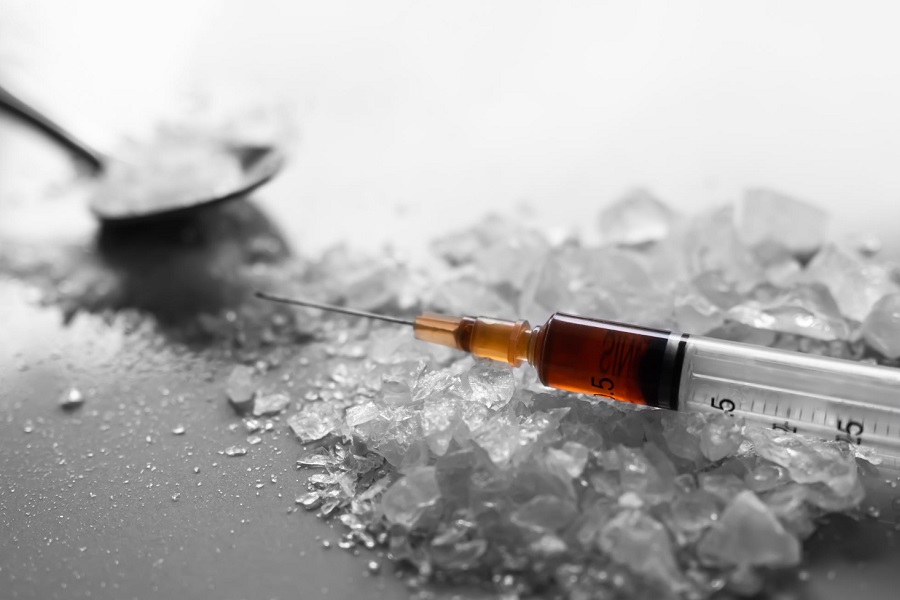Table of contents:
October 31, 2023
Buprenorphine is a prescription narcotic drug that is used to treat moderate to severe pain and is also used as a treatment method for opioid use disorder (OUD). This medication is a partial opioid agonist, which means that it activates only some of the opioid receptors in the brain while blocking others. This leads to a weaker euphoric effect than other opioids such as heroin or morphine, though it is still present. Alongside methadone and naltrexone, buprenorphine is among only three FDA-approved medications that are frequently prescribed to treat opioid addiction.
This article will help you learn about what makes buprenorphine addictive and teach you how to recognize the signs and symptoms of buprenorphine addiction and overdose. You will also discover some great buprenorphine addiction treatment options that can be of help to you or your loved ones in case an addiction to buprenorphine occurs.
What is buprenorphine and why is it addictive?
Buprenorphine is a long-acting drug, meaning that it is slowly released into the body over a longer period of time than many other opioids. It was created in the 1960s and is made from a synthetic version of thebaine – a compound that comes from the poppy flower, which other opioids such as heroin and morphine are derived from as well.

Even though buprenorphine is used to treat opioid addiction and prevent drug cravings and relapse, using this drug as a treatment method for OUD can have consequences. Buprenorphine has an addiction potential of its own due to the euphoric effects it can cause in cases of inappropriate use. Even though the effects of buprenorphine are weaker since it is only a partial opioid agonist, they can still be addictive. Unfortunately, this means that some drug abusers trade one addiction for another. This is more likely when buprenorphine is used for longer or in higher doses than is recommended, as a dependence can develop, which leads to drug abuse and addiction.
Pharmaceutical and slang terms for buprenorphine
Subutex is a sublingual buprenorphine tablet and is mostly used for the treatment of opioid addiction. Unfortunately, when not taken according to the doctor’s prescriptions, Subutex can easily be used as a recreational drug, so Suboxone was developed in an attempt to circumvent this.
Suboxone may come in the form of a sublingual tablet or a sublingual film and it is a combination of naloxone and buprenorphine. Naloxone is an opioid antagonist, meaning that it blocks opioid receptors without activating them or causing any euphoric effects. This medication was created to deter the use of buprenorphine products for the purpose of getting high, as the reaction between naloxone and buprenorphine results in uncomfortable symptoms and taking it in high doses can lead to violent allergic reactions.
Some other brand names include:
- Butrans: A buprenorphine transdermal patch that must be replaced every 7 days and should only ever be used by those with chronic pain and those who are used to the effects of opioid analgesics, as the high dosages can be harmful otherwise.
- Buprenex: An injectable form of buprenorphine that is only used in a professional medical setting.
- Suboclade: An extended-release injection that can be given once per month by a healthcare provider to those with OUD.
- Belbuca and Bunavail: Buccal films (films that dissolve inside the cheek) that relieve pain and treat opioid addiction respectively.
Some common slang terms for buprenorphine include “buse”, “sobos”, “strips”, “oranges”, and “subs”.
Signs and symptoms of buprenorphine addiction

With drug abuse comes psychological and behavioral changes, and familiarizing yourself with these signs can help you realize that you or a loved one has an addiction. Some possible behavioral signs of buprenorphine addiction include:
- Using buprenorphine alongside other substances such as alcohol or benzodiazepines.
- Taking more of the drug or taking it for a longer period of time than directed.
- Neglecting everyday responsibilities at home or in the workplace.
- Continued drug use despite negative effects on your quality of life.
- Lying to a doctor to get more buprenorphine or changing doctors to get new prescriptions.
- Spending excessive amounts of money on buprenorphine.
- Searching for buprenorphine through illicit means.
- Experiencing strong drug cravings.
- Attempting to quit and failing, or the presence of withdrawal symptoms upon trying to quit.
Those who abuse buprenorphine may experience uncomfortable and potentially harmful symptoms after continued use. Some physical and psychological symptoms you might experience include:
- Nausea and vomiting
- Changes in appetite
- Diarrhea
- Drowsiness and confusion
- Slurred speech
- Impaired motor functions
- Itching
- Sleep troubles
- Increased blood pressure
- Reduced respiratory function
This list is not exhaustive, and those with more severe addictions may experience more intense and uncomfortable symptoms. Some long-term side effects of buprenorphine use might include issues with hormone production, liver damage, and the presence of severe withdrawal symptoms upon cessation of use.
Buprenorphine overdose symptoms
One of the most dangerous aspects of buprenorphine addiction is the possibility of overdose. Overdose can occur when a very high dose of the drug is taken, but in the case of buprenorphine, it is more likely that overdose will occur after mixing substances. Mixing buprenorphine with other opioids or nervous system depressants such as alcohol can greatly increase the risk of overdose.
Someone going through a buprenorphine overdose might experience extreme sedation and fatigue, cold or sweaty skin, fainting, low blood pressure, coma, and reduced respiratory function. Slowed and/or shallow breathing are some of the most dangerous symptoms of overdose, as there is a chance that you will stop breathing altogether. If you suspect that you or a loved one is going through a buprenorphine overdose, contact a medical professional right away.
Treatment for buprenorphine abuse
It is possible to detox gradually at home with the guidance and advice of your doctor, but the safest place to go through buprenorphine detoxification is in a medical facility that specializes in addiction treatment. This is especially true if your addiction is severe or if you have other health conditions that could compromise your safety.

There are two main options for the treatment of buprenorphine addiction. As mentioned above, the first involves gradually tapering off the dose of the drug in order to avoid the worst of the withdrawal symptoms while lowering the medication’s concentration in your body. This method is long, uncomfortable, and often unsuccessful. The presence of drug cravings and the possibility of withdrawal symptoms over such a long period of time often drives people to relapse.
The other addiction treatment option involves ultra-rapid opioid detoxification (UROD). This is a drug detoxification procedure in which the patient is under anesthesia for about 6-8 hours while they are given opiate-detoxifying medications such as naloxone and naltrexone. This process is only completed in a professional medical facility where the patient’s vitals can be constantly monitored before, during, and after the procedure. This method may be repeated several times.
UROD is only one part of the treatment as a whole, and addiction treatment experts might recommend any combination of pharmacotherapy, physiotherapy, or behavioral therapy for varying amounts of time. This entire process is meant to reduce the experience of withdrawal symptoms and drug cravings as you detox from buprenorphine, as well as provide support after the detox procedure itself.
You don’t have to battle addiction alone. Contact us today to learn more about how we can help you get off of buprenorphine for good.
Frequently asked questions
Why is buprenorphine addictive?
Buprenorphine is a partial opioid agonist, which means that it activates only some of the opioid receptors in the brain while blocking others. Though this leads to a weaker euphoric effect than other opioids such as heroin or morphine, the effect is still present and can lead to addiction, especially when the drug is abused. Unfortunately, this means that many people that suffer from opioid use disorder (OUD) and use buprenorphine to treat it may be trading one addiction for another.
What are the signs and symptoms of buprenorphine addiction?
Some common behavioral signs associated with opioid addiction include neglecting everyday responsibilities, socially isolating oneself, and lying to doctors in order to get more of the drug. Those addicted to buprenorphine may experience some of the following symptoms: nausea and vomiting, drowsiness and confusion, sleep troubles, impaired motor function, and reduced respiratory function.
How can I get off of buprenorphine?
A safe and comfortable way to get off of buprenorphine is with the ultra-rapid opioid detox (UROD) procedure. The patient is under anesthesia as the drug is cleaned from their body and their health is constantly monitored. After this procedure, the remainder of the addiction treatment program might consist of outpatient treatment, pharmacotherapy, physiotherapy, and behavioral therapy sessions.
Published on October 31, 2023



